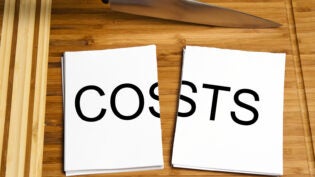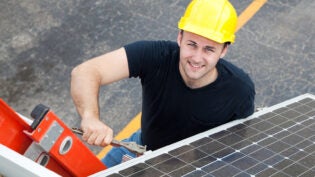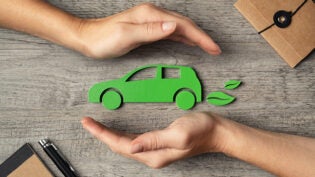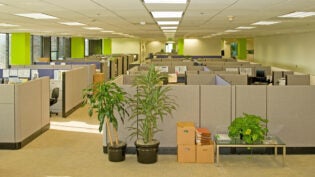
Bike to work. Recycle. Take shorter showers. As individuals, we are constantly bombarded with messages like these that encourage us to “Go Green.” Now, web designers are being urged to join the cause. It’s not something you think about every day, but the Internet has a pretty significant carbon footprint. 830 millions tons of CO2 annually. To put things in perspective, that number is bigger than that of the entire aviation industry and it’s increasing every year.
So you might be thinking that these emissions are the result of streaming, downloads, general web traffic, etc. But the reality is that 40% of the Internet’s total footprint is created by those who design for the web. According to James Christie in his article “Sustainable Web Design,” web designers are currently creating monstrous, energy-demanding sites filled with rotating carousels, and huge, high-res images. However, he argues that the same information could be better served by creating slender, resource-saving websites. So how do you create this type of eco-friendly website? Let’s find out!
Mobile-First Design = Eco-Friendly Design
The good news is that if you take a mobile-first approach to web design or utilize methods like responsive web design, you are already taking the first steps to creating an eco-friendly website. That’s right, what’s best for the environment also happens to be what’s best for your website users. When designers take a mobile-first approach to design, they plan to create a website that can deliver information most efficiently across a broad range of devices and platforms. This encourages designers to strive for faster, lighter sites with quicker load times. Turns out that when you reduce page sizes, you can also help reduce those pesky CO2 emissions.
Now that being said, it can be difficult to explain to a client that you want to limit the bells and whistles on their site to speed up load times and save the earth. To address this concern, some agencies have adopted a “Page Size Budget” system in which they give the client a target page size and then stick to it by working with the client to pick and choose the design elements that are most important and which can be sacrificed to decrease overall size.
Content is (the Carbon) King
We all know how important content is to a website and to an overall marketing strategy. It’s also something extremely important to consider when trying to minimize a website’s carbon footprint. Content is a defining factor when starting any web design. In fact, without content, a design is merely decorative. If you take a content-first approach, you can make decisions about certain elements and their sizes early on the process. This will ensure that you make choices about images, video, and text that are appropriate for your audience, marketing goals, and target page size.
Images are by far one of the leading causes of the carbon footprint for most websites. Large, un-optimized images account for about 60 percent of the total CO2 emissions for a site. Designers can combat this by ensuring that the images they use for web are optimized for web. Photography software like Adobe Photoshop often has easy saving options that allow you to save photos in the correct format for web. In addition to this, designers can use CSS image sprites and web font icon sets to minimize HTTP requests. The simplest way may involve not using real images at all but instead building images with pure CSS.
Where content is concerned, it’s also important to consider the way third party plugins and interactive site features can affect your site size. Large carosel sliders, embedded maps, auto-play video, and flash all come with very bulky data overhead. Slim down on the crazy add-ons and the world will thank you for it.
Convincing the World to Save the World
Ok, so all of this is fine and dandy, but let’s be honest, it’s not always easy to convince people to “Go Green.” In this case, the important thing to remember is that creating an eco-friendly website has not just one, but two very positive benefits: one is to reduce CO2 emissions, but the other is to optimize a website so that users can benefit from faster load times too. Faster pages make for better SEO, higher conversions, better mobile experiences and most importantly, happy users.
The saving the environment part is merely icing on the cake.
By Jacey Gulden
This article was originally published by SyneCore
Published: November 15, 2013
2326 Views
2326 Views













